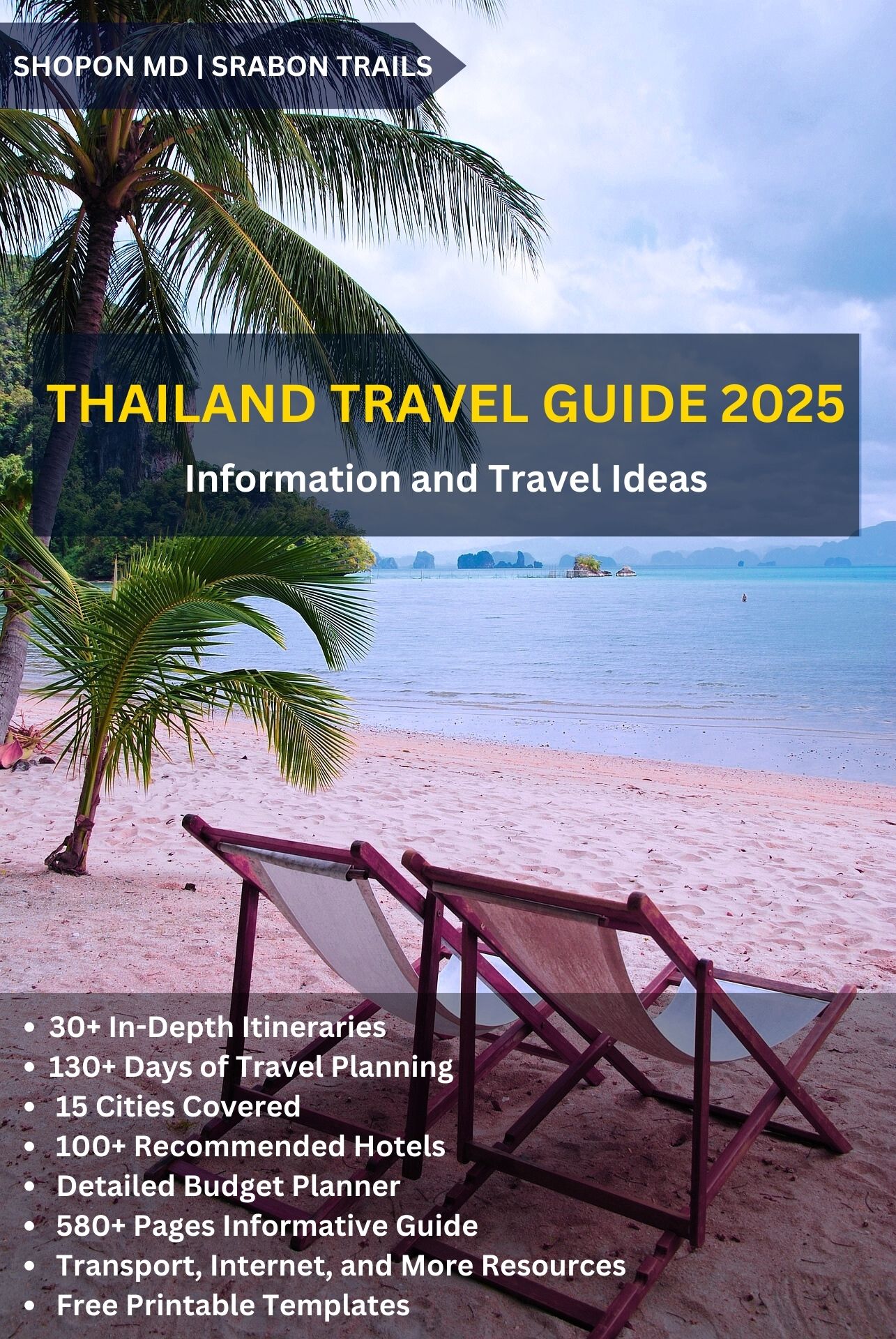Yongmunsan Mountain (용문산): An Adventure Packed with Natural Beauty and History
Nestled in the serene landscape of Gyeonggi-do, South Korea, Yongmunsan Mountain is a haven for hikers, nature lovers, and anyone seeking an escape from the bustling city life. Whether it’s the pristine air, the ancient gingko trees, or the challenge of its snow-laden trails, Yongmunsan offers an experience that remains etched in memory. From the enchanting Yongmunsa Temple to the breathtaking Yongmun Jeongsang Peak, every corner of this destination tells a story.
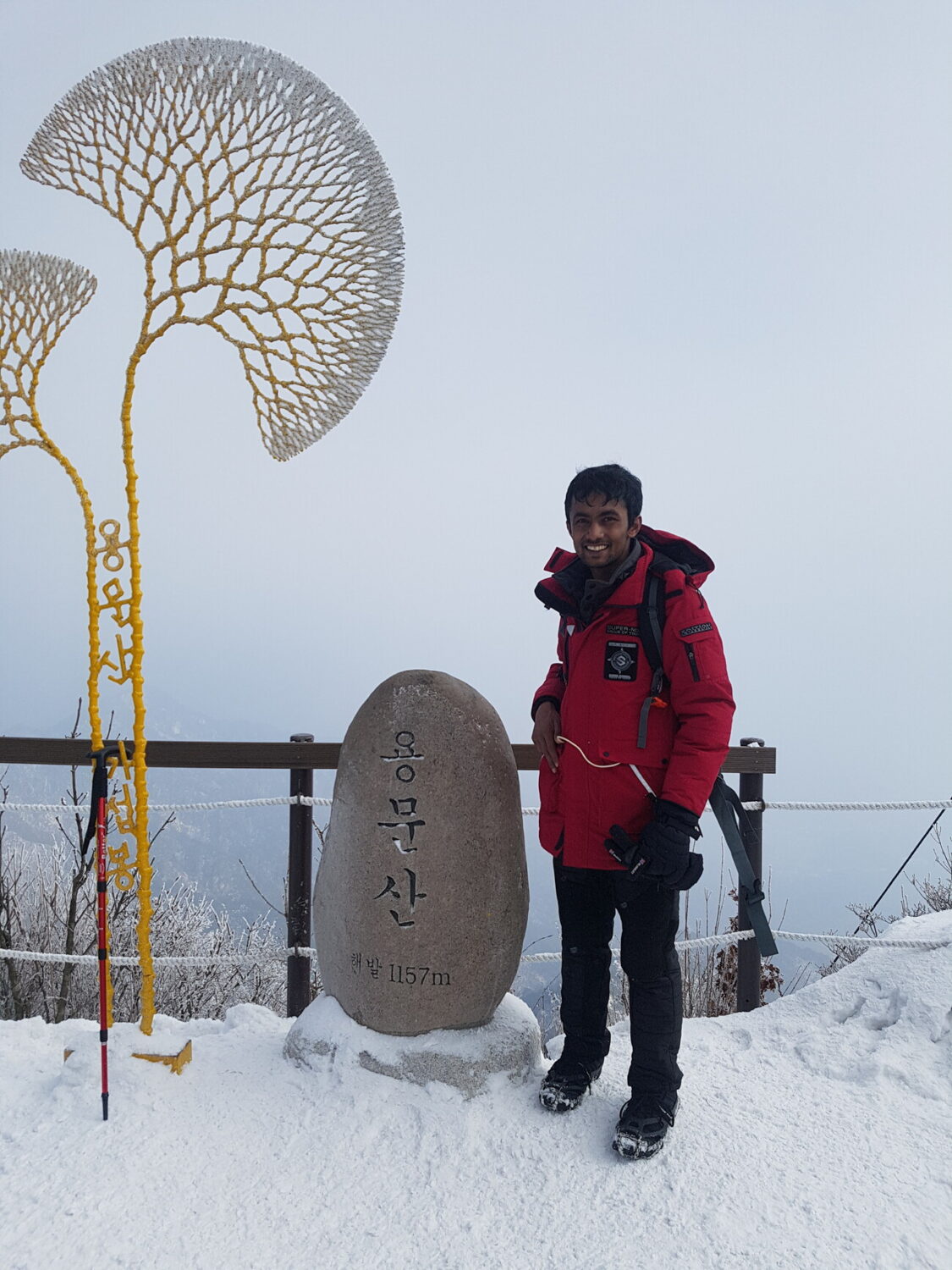
In my personal experience, Yongmunsan turned out to be far more than just a hiking trail—it was an adventure, a lesson in perseverance, and a feast for the eyes. Here’s everything you need to know about this stunning destination, along with my journey to its summit.
Discovering the Treasures of Yongmunsan Mountain
Yongmunsan Mountain is famous for many reasons, but perhaps its most iconic feature is the ancient gingko tree near Yongmunsa Temple. This tree is over 1,100 years old and is often called the largest and oldest gingko tree in Korea. Towering at 197 feet tall with a trunk circumference of 49 feet, the tree is an emblem of resilience and history. It’s believed that this tree grants wishes, and locals often visit it to offer prayers and tie ribbons around its branches.
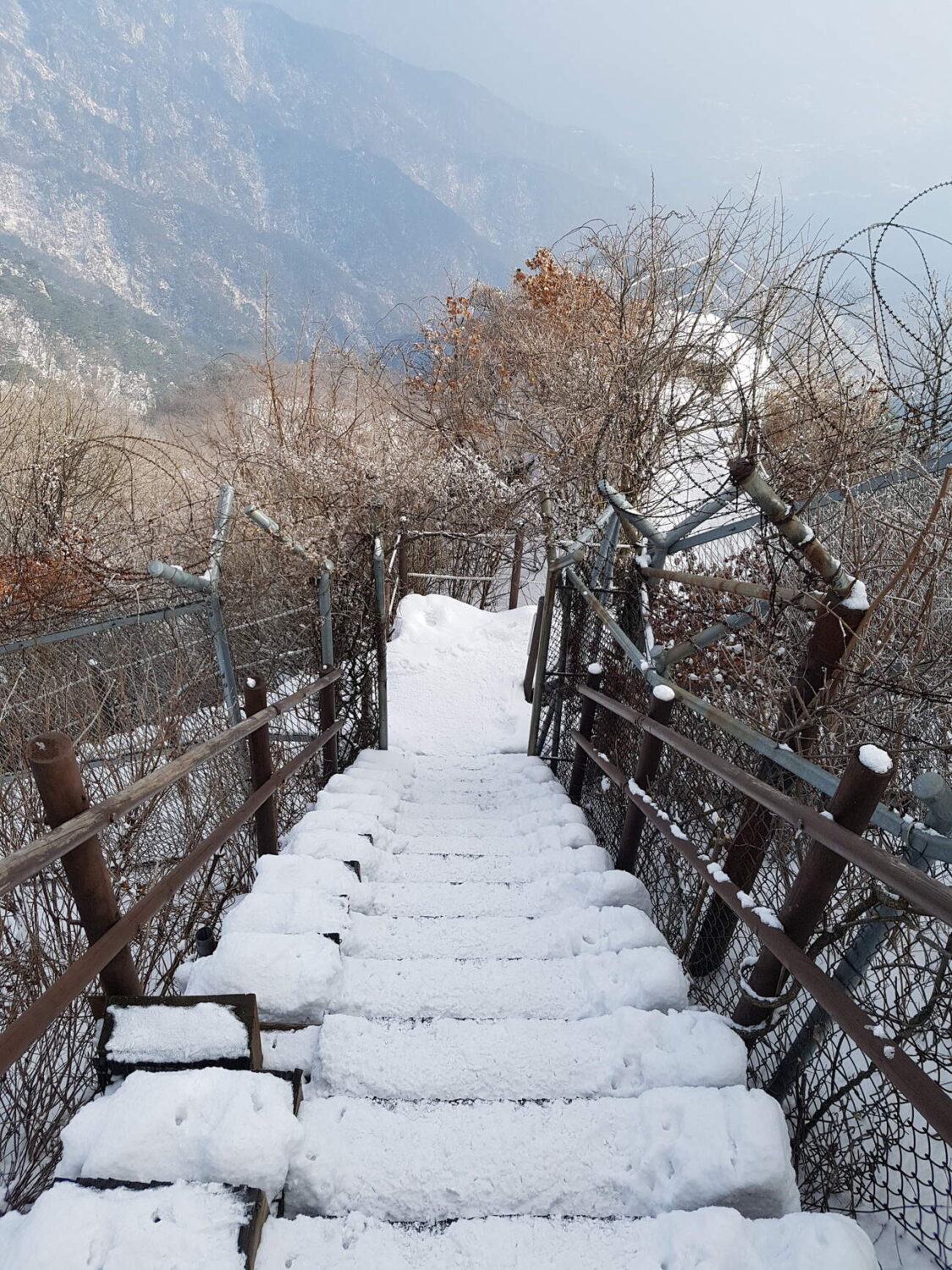
The mountain also boasts Jungwon Waterfall (중원폭포), an ethereal sight, especially in winter. The waterfall’s tiers freeze into beautiful icy cascades, creating a dreamy atmosphere that feels almost otherworldly. Nearby, you’ll find picturesque temples, lush forests, and trails that wind through the landscape like veins of adventure.
Trail to Yongmun Jeongsang Peak: My Journey
Choosing the Right Trail
While there are multiple trails to Yongmunsan’s summit, I decided to start from Yongmunsa Temple for its reputation as the shortest yet most scenic route. The trail runs alongside Jungwon Waterfall, with its soothing sound accompanying hikers for a portion of the journey. At 4.5 km (one way), the trail is steep in some sections but well worth the effort. For most hikers, it takes around three hours to reach the peak. For me, due to the thick snow and subzero temperatures, it took closer to four hours.
Getting Started
The trail was blanketed in snow, and the air was crisp and refreshing. Winters at Yongmunsan are quiet, offering an unmatched sense of solitude. At the base, I met a kind hiker who moved with a steady pace that put my energy to shame. We exchanged greetings, and I realized how popular hiking is among Korea’s older generation. Their resilience and love for nature are genuinely inspiring.
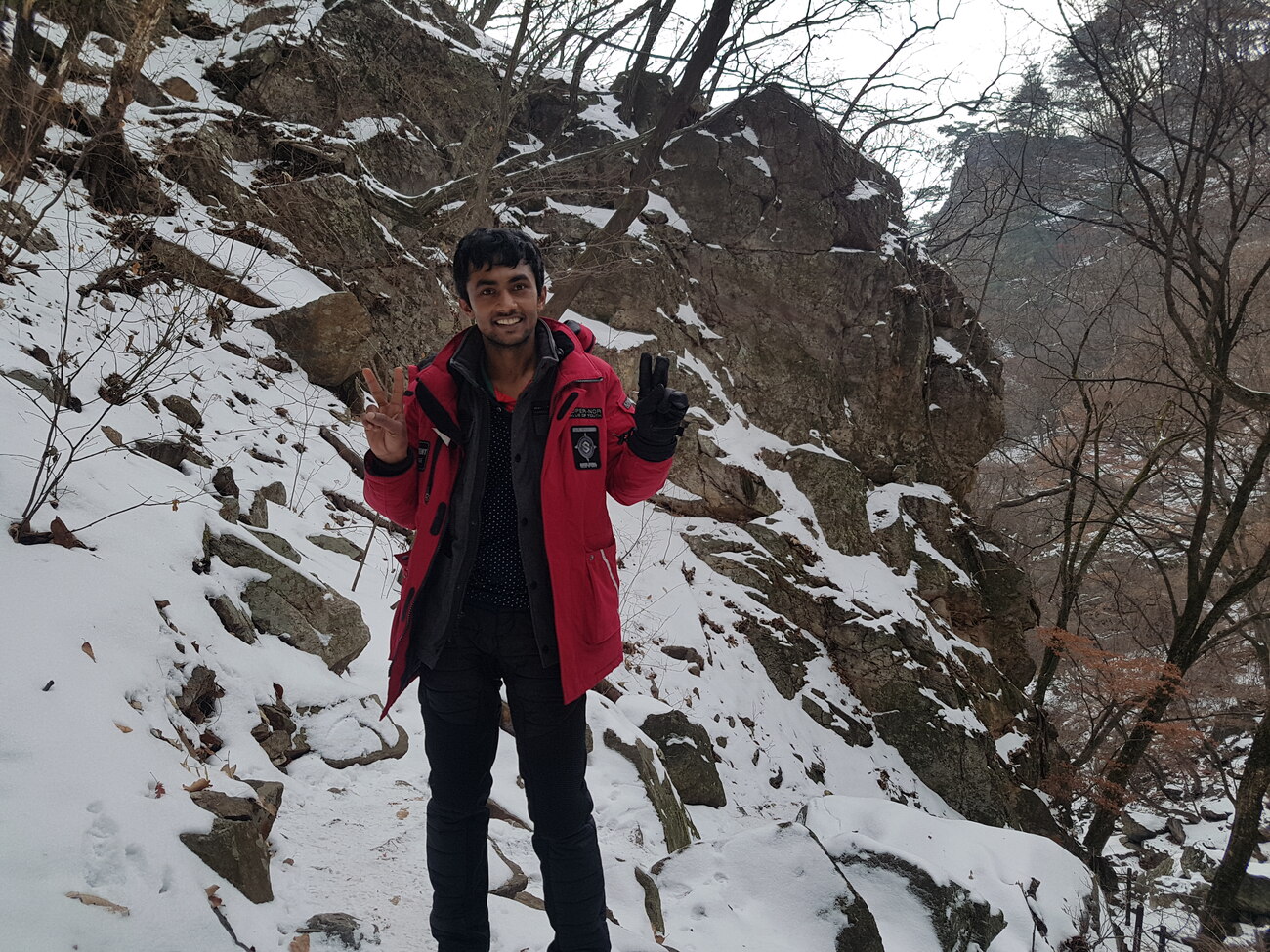
As I ascended, the snow-covered trail felt challenging but exhilarating. Using my trekking poles to test the terrain, I carefully navigated my way to the first landmark, Madangbawi Rock (마당바위). This massive boulder has a stream running beneath it, which had frozen over in the cold. The surrounding area was breathtaking, and I paused here to take in the view.
Facing the Steep Climb
The trail quickly turned steeper after Madangbawi Rock. The next 1 km was grueling, with icy patches and knee-deep snow. At times, I felt the cold biting through my gloves and jacket, but the beauty of the forest kept me motivated. I came across Yonggakbawi Rock (용각바위), which resembles the head of a dragon. Standing here, I could see the entire valley below and felt a rush of energy to keep going.
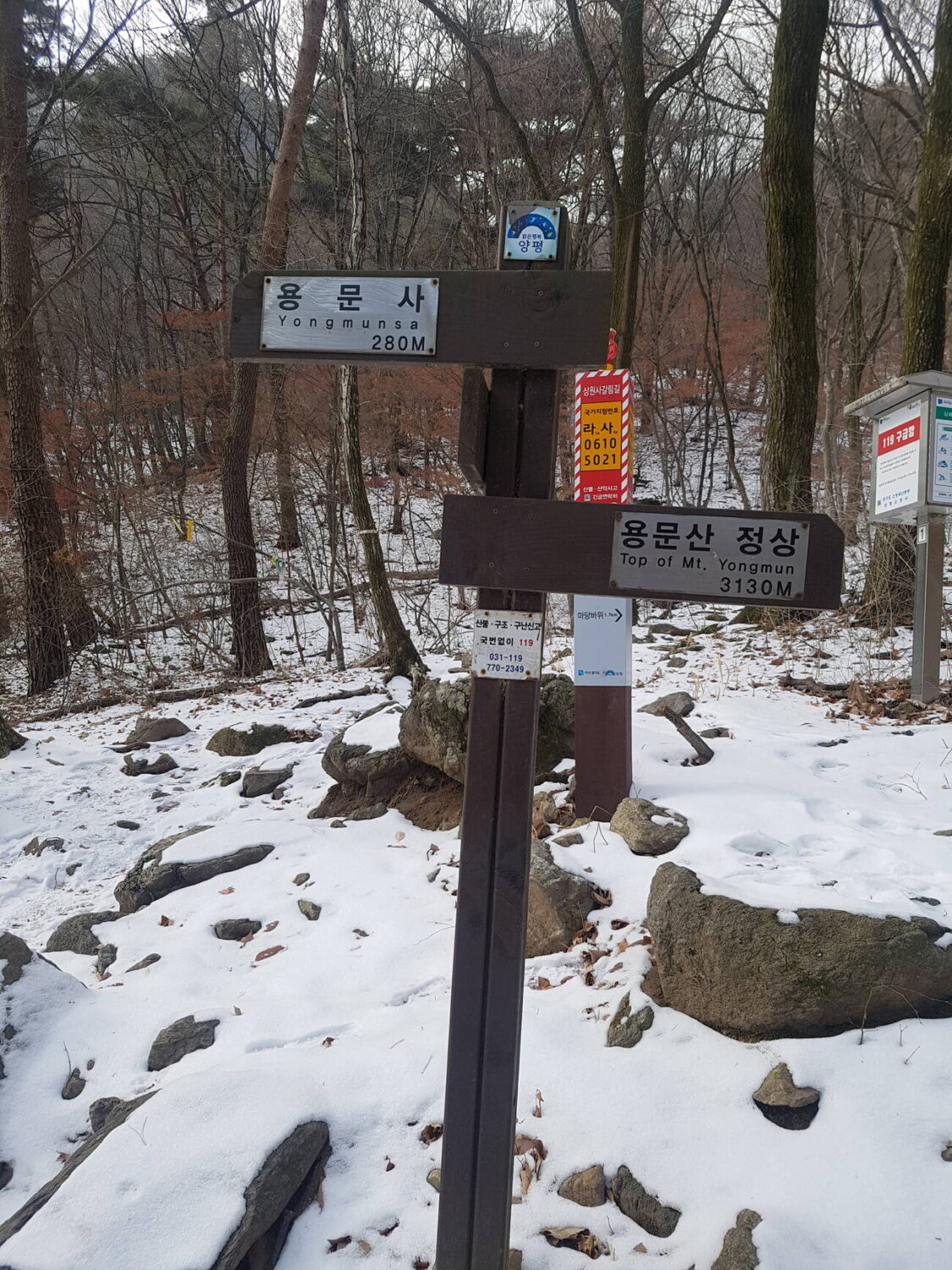
The temperature had dropped to around -12°C, and every breath felt heavier as I climbed higher. The trail was narrow in some sections, with steep drops that demanded extra caution. The stark, snow-covered trees lining the path created a winter wonderland, making every step feel like walking through a fairytale.
Reaching the Summit
The final stretch to Yongmun Jeongsang Peak was both the most challenging and the most rewarding part of the hike. A wooden staircase marked the last leg of the climb. At the summit, I was greeted with panoramic views of the surrounding mountains, their peaks dusted with snow. The wind was fierce, but the sense of accomplishment was worth braving the cold.
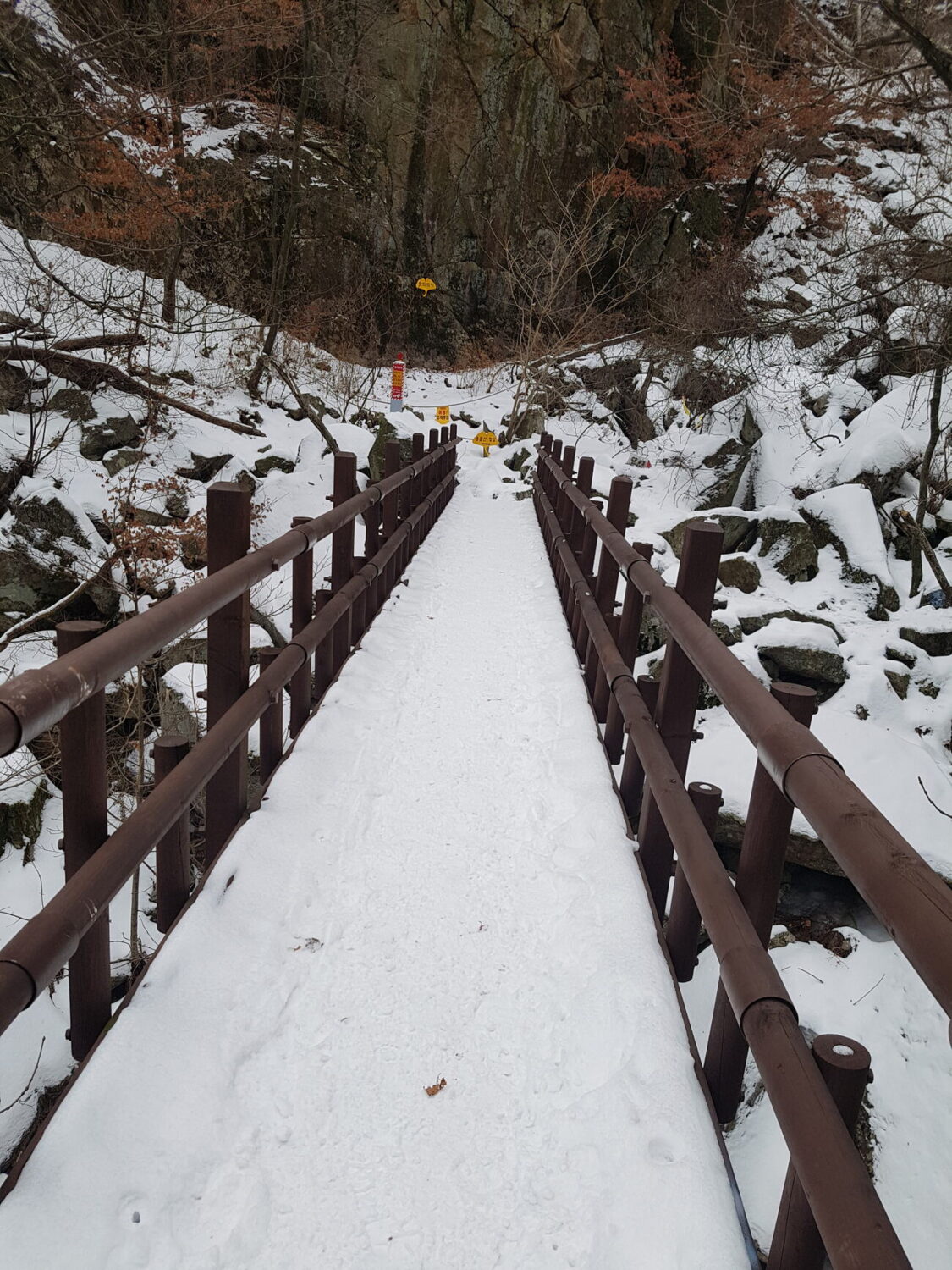
The summit area is small but well-maintained, with a few rocks and signposts marking the peak. I spent a few moments soaking in the views and taking photos before starting my descent.
Heading Down: A Smoother Descent
For the descent, I chose a different trail that looped back to Yongmunsa Temple. It was less steep and quicker, taking around two hours. However, the icy patches required careful footing, and I found myself thankful for my trekking poles. By the time I returned to Yongmun Resort, it was late afternoon. Exhausted but fulfilled, I started the three-hour journey back to my home, already dreaming of my next hike.
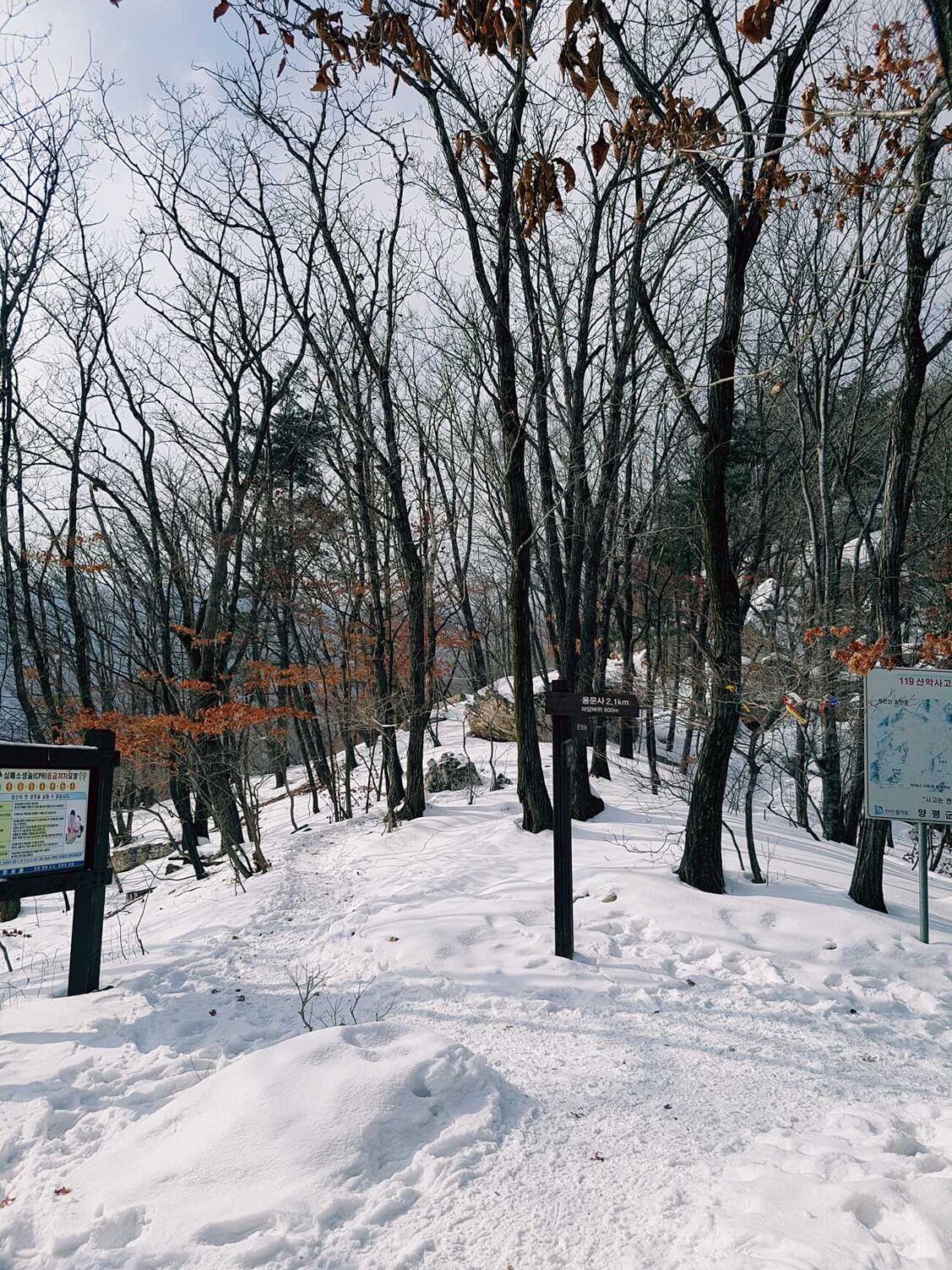
Trail Options for Yongmunsan Mountain
If you’re planning to visit, here are the three main hiking routes to consider:
- Course 1: Yongmunsan Resort → Yongmunsa Temple → Madangbawi Rock → Yongmunsan Peak
- Best for: First-timers looking for a relatively shorter route
- Highlights: Ancient gingko tree, Jungwon Waterfall, scenic views
- Course 2: Yongmunsan Resort → Yongmunsa Temple → Neungseongil (능선길) → Yongmunsan Peak
- Best for: Hikers who enjoy ridge trails
- Highlights: Stunning views of the valley and mountain range
- Course 3: Yongmunsan Resort → Yongmunsa Temple → Yongmunsan Peak → Baegunbong (백운봉) → Saesugol
- Best for: Experienced hikers seeking a longer, more challenging route
- Highlights: Multiple peaks, diverse landscapes
Things to Know Before You Go
Operating Hours
The mountain is accessible year-round, but Yongmun Resort operates from 8:00 AM to 5:00 PM. It’s best to plan your hike during daylight hours for safety.
Best Time to Visit
- Spring: The trails come alive with blooming flowers.
- Summer: Perfect for lush greenery and cooler mountain air.
- Autumn: Stunning foliage covers the landscape in hues of red, orange, and gold.
- Winter: Quiet trails with snow-laden paths, offering a unique hiking experience.
Entry Fee
- Admission to Yongmunsa Temple: 2,500 KRW (~$2 USD)
- Parking: Available at Yongmun Resort for an additional fee.
What to Bring
- Sturdy hiking boots (essential in winter for icy paths)
- Trekking poles for balance
- Warm clothing, gloves, and a hat in colder months
- Snacks and water (though small shops near the resort sell basics)
Getting There
- By Subway: Take the Gyeonggi-Jungang Line to Yongmun Station. From there, catch Bus 7, which goes directly to Yongmun Resort.
- By Car: Enter “Yongmun Resort” or “Yongmunsa Temple” in your GPS. Parking is available near the base.
Contact Information
- Phone: +82-31-773-3797 or +82-31-775-5797
- Website: www.yongmunsa.biz
- Address: 782 Yongmunsan-ro, Yangpyeong-gun, Gyeonggi-do, South Korea
Yongmunsan Mountain is a place that will challenge you, inspire you, and leave you wanting more. It’s a destination where natural beauty and history come together to create an unforgettable experience. Whether you’re an avid hiker or someone looking to explore the serene outdoors, Yongmunsan promises a journey worth every step.








